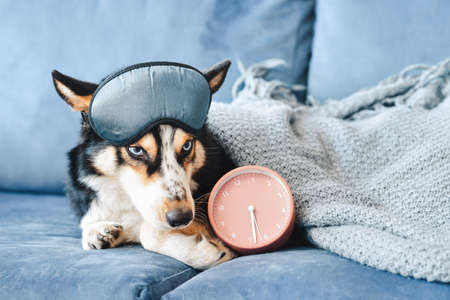1. Understanding Pet Comfort Needs
When it comes to making our pets feel cozy, there’s more science involved than you might think. Comfort isn’t a one-size-fits-all concept—different pets have unique needs based on their species, breed, age, and even personality. Let’s dive into what makes a bed truly comfy for our furry friends.
How Breed Affects Comfort Preferences
Some breeds love to burrow, while others stretch out or curl up tight. For example, Greyhounds often prefer soft, cushioned beds to support their bony frames, while Huskies might enjoy cooler surfaces because of their thick fur. Cats like Maine Coons may favor spacious beds that let them sprawl, whereas smaller breeds like Chihuahuas may seek out snuggly, enclosed spaces for warmth and security.
| Breed Type | Preferred Bed Type | Reason |
|---|---|---|
| Greyhound | Thick, padded beds | Bony structure needs extra cushioning |
| Husky | Cooling mats or breathable fabrics | Thick coats make them prone to overheating |
| Maine Coon (Cat) | Large, spacious beds | Larger size and love of stretching out |
| Chihuahua | Cave-style or enclosed beds | Tiny bodies crave warmth and security |
The Role of Age in Pet Comfort
Puppies and kittens often need softer, warmer beds that mimic the comfort of their mother and littermates. Senior pets might benefit from orthopedic memory foam to soothe aging joints and bones. Adjusting the bed as your pet ages can help maintain their comfort and health.
| Life Stage | Bed Features Needed |
|---|---|
| Puppy/Kitten | Softness, warmth, security (bolsters or nest shapes) |
| Adult Pet | Durable materials, easy-to-clean fabrics, proper size |
| Senior Pet | Orthopedic support, low entry for easy access, gentle fabrics |
Personality and Individual Preferences Matter Too!
Just like people, pets have personalities that affect what makes them comfortable. Some dogs love a little privacy—a hooded or tent-style bed is perfect for these shy types. Others are social butterflies and want an open pillow near the family action. Cats who love sunbathing will appreciate a window perch bed. Pay attention to your pet’s habits; do they dig before lying down? Do they hide under blankets? These clues can guide you toward the coziest options for your individual pet.
Quick Tips:
- If your pet likes to chew or scratch, look for tough, chew-resistant fabrics.
- If they’re anxious or easily startled, consider beds with raised sides for a sense of security.
- If your home is warm or cold, choose materials that help regulate your pet’s temperature.
The secret to a cozy pet bed lies in understanding your furry friend’s unique needs—and giving them a space that feels just right for them.
2. The Role of Materials in Pet Beds
When it comes to making a pet bed truly cozy, the materials used play a huge role. American pet owners have plenty of options, but three stand out: memory foam, orthopedic filling, and plush fabrics. Each brings something special to the comfort equation for our furry friends.
Memory Foam: Support That Remembers
Memory foam is popular in both human and pet beds because it molds to the body’s shape, offering even support. For pets, this means less pressure on their joints and a bed that feels just right every time they curl up. Older dogs or those with arthritis especially benefit from this material because it helps ease aches and pains.
Orthopedic Filling: Extra Cushioning for Health
Orthopedic pet beds often use specialized foams or layered fillings designed to offer extra cushioning and support. These beds can help distribute your pet’s weight evenly, reducing stress on pressure points. This is especially helpful for larger breeds or pets recovering from surgery.
Plush Fabrics: Warmth and Softness
The outer layer of a pet bed matters just as much as what’s inside. Plush fabrics—like faux fur, sherpa, or soft fleece—create a warm, inviting surface that encourages pets to snuggle up. These materials are especially popular in the U.S., where pets are often treated like family members who deserve a little luxury.
Common Pet Bed Materials Compared
| Material | Main Benefit | Best For |
|---|---|---|
| Memory Foam | Body-conforming support, reduces joint pain | Seniors, arthritic pets |
| Orthopedic Filling | Cushioning and pressure relief | Large breeds, injured/recovering pets |
| Plush Fabrics | Warmth and softness, cozy feel | Puppies, cats, pets who love snuggling |
Choosing What’s Best for Your Pet
No two pets are exactly alike. Some need more support while others just want a soft spot to nap. Understanding how these common materials contribute to warmth and comfort can help you pick the perfect bed for your best friend.

3. Temperature and Environment
When it comes to keeping pets cozy, temperature and the environment play a big role. In the United States, homes can be very different depending on where you live—think hot summers in Texas or chilly winters in Minnesota. This means pet beds need to meet a variety of climate needs. Let’s break down how American home environments affect pet bed design and what features help keep pets comfortable all year round.
Heating Features for Cold Climates
Many American homes experience cold winters, especially in northern states. To help pets stay warm, some beds come with built-in heating pads or are made from thermal materials that trap body heat. These features are especially useful for older pets or those with thin fur who need extra warmth during colder months.
Popular Heating Features in Pet Beds:
| Feature | Description | Best For |
|---|---|---|
| Self-warming fabric | Reflects pets own heat back to them | Puppies, senior pets, small breeds |
| Electric heating pad | Provides adjustable warmth; often removable for washing | Cold climates, arthritic pets |
| Insulated foam base | Keeps cold floors from chilling the bed | Homes with tile or hardwood floors |
Cooling Features for Warm Climates
In places with hot summers or warmer indoor temperatures, pets can easily overheat. Some modern pet beds use cooling gel layers or breathable fabrics to help regulate temperature and prevent overheating.
Common Cooling Features:
| Feature | Description | Best For |
|---|---|---|
| Cooling gel inserts | Dissipates heat away from the body for a cooler surface | Brachycephalic breeds (like Bulldogs), thick-coated pets, hot climates |
| Mesh or ventilated fabric covers | Allows air circulation to keep things cool and dry | Pets prone to overheating, humid regions |
| Elevated cot design | Keeps bed off the ground for airflow underneath | Outdoor use, summer months, large dogs |
Moisture-Wicking Materials for Humidity Control
A lot of American homes deal with humidity, which can make beds damp and uncomfortable. Moisture-wicking fabrics pull sweat and moisture away from your pet’s body, helping them feel dry and fresh—even after playtime or during muggy weather.
Benefits of Moisture-Wicking Beds:
- No more “dog smell”: These materials help reduce odors caused by trapped moisture.
- Easier cleaning: Many are machine washable and quick-drying.
- Mold prevention: Helps keep the bed free from mildew and allergens.
The Bottom Line on Environmentally-Smart Pet Beds:
| Feature Type | Good For | Why It Matters |
|---|---|---|
| Heating | Winter/cold homes | Keeps pets warm and comfortable |
| Cooling | Summer/warm homes | Prevents overheating, especially for sensitive breeds |
| Moisture-wicking | Humid environments/active pets | Reduces odor and keeps bed fresh |
By understanding the impact of climate and typical American home environments, pet owners can choose beds with the right features—making sure their furry friends stay comfy no matter what the weather brings.
4. Shape, Size, and Structure
When it comes to making a bed truly cozy for your pet, the shape, size, and structure of the bed play a huge role. Pets—whether cats or dogs—have natural instincts that drive them to seek out spaces that feel safe and snug. Let’s break down how different bed designs meet these needs and help our furry friends feel right at home.
How Shape Influences Comfort
Pets love to curl up or stretch out, depending on their mood or breed. Round beds, like donut beds, cater to pets that enjoy curling up in a tight ball. These beds mimic the den-like environments wild animals seek for safety and warmth. On the other hand, rectangular or oval beds provide more space for pets who prefer to sprawl out.
Comparing Bed Shapes
| Bed Shape | Best For | Main Benefit |
|---|---|---|
| Round/Donut | Curlers, anxious pets | Encloses body for security and warmth |
| Rectangular/Oval | Stretchers, larger breeds | Room to sprawl, supports multiple sleep positions |
| Cave/Tent-Style | Cats, shy pets | Private hideaway; reduces stress from noise and light |
Selecting the Right Size Matters
A bed that’s too small can make your pet feel cramped and uncomfortable, while an oversized bed may not provide the cozy feeling pets crave. Ideally, the bed should be just large enough for your pet to turn around comfortably but still let them nestle into the edges.
Structural Features That Make a Difference
Bolstered Edges and Raised Sides
Beds with bolstered edges or raised sides are favorites among many pets because they offer head support and create a sense of enclosure. This design appeals to your pet’s instinctual need for protection—much like how wild animals might rest against the side of a burrow or den.
Orthopedic Foam vs. Plush Fillings
The type of filling also affects comfort. Orthopedic foam gives older pets joint support, while plush fillings allow younger pets or those without special needs to sink in and snuggle up. The best choice depends on your pets age, health, and preferences.
Quick Reference: Bed Structures and Benefits
| Structure Type | Ideal For | Main Security/Comfort Benefit |
|---|---|---|
| Bolstered Edges | Puppies, anxious pets, dogs that like pillows | Mimics nest walls; offers head/chin support and sense of enclosure |
| No Sides (Flat) | Seniors with mobility issues, large breeds | Easy entry/exit; no restrictive barriers; best for stretching out fully |
| Cave-Style/Tented Beds | Cats; nervous or shy pets; small dogs like Chihuahuas or Dachshunds | Total privacy; blocks drafts/noise/light; satisfies hiding instinct |
| Orthopedic Foam Base | Seniors; arthritic pets; large breeds prone to joint issues | Even weight distribution; relieves pressure points for better sleep |
| Plush/Fiber Fillings | Puppies/kittens; healthy adults | Softer nest feel; lets pets burrow in for warmth/comfort |
Understanding these factors helps you choose a bed that aligns with your pets unique habits—and ultimately ensures they get cozy rest every night.
5. Pet Safety and Cleanliness
When it comes to making your pet’s bed truly cozy, safety and cleanliness are just as important as softness or support. American pet owners know how crucial it is to keep both pets and homes healthy. Let’s take a closer look at the features that matter most for a clean and safe pet bed.
Machine-Washable Covers: A Must-Have
Pets can be messy, whether it’s shedding fur, dirty paws, or the occasional accident. That’s why machine-washable covers are so popular in the U.S. They make cleaning easy and help reduce allergens like dust mites and dander that could bother both pets and humans. With a quick cycle in the washing machine, you can keep your pet’s sleeping area fresh and odor-free.
Why Machine-Washable Covers Matter
| Benefit | Explanation |
|---|---|
| Easy Cleaning | Toss in the washer to remove dirt, hair, and bacteria quickly. |
| Allergy Control | Regular washing helps prevent allergen build-up for sensitive pets and people. |
| Odor Reduction | Helps eliminate smells caused by sweat or accidents. |
| Longer Bed Life | Covers last longer with frequent cleaning. |
Hypoallergenic Components for Sensitive Pets
Many American families deal with allergies, so hypoallergenic materials are a big plus. These specially designed fabrics and fillings resist common allergens like dust mites, mold, and pet dander. This helps create a healthier environment for everyone—especially if someone in your home has allergies or asthma.
Common Hypoallergenic Materials Used in Pet Beds
- Bamboo fiber covers
- Microfiber fabrics
- Synthetic fills (like polyester)
- Cotton blends treated for allergy resistance
Non-Toxic Materials: Keeping Pets Safe from Harmful Chemicals
Pets love to chew or lick their beds, so using non-toxic materials is essential. In the U.S., more brands now meet strict safety standards by avoiding harmful chemicals like flame retardants, formaldehyde, and phthalates. Look for beds labeled as “certified non-toxic” or “free from harmful chemicals” to ensure your pet’s safety while they rest.
Key Features to Look For:
- No added chemical flame retardants
- No heavy metals or toxic dyes in fabrics
- No strong odors from off-gassing foams or plastics
- Certifications like CertiPUR-US® for foam products
Selecting a pet bed with these features helps you maintain American standards of health and hygiene at home—giving you peace of mind while your furry friend enjoys their cozy spot.


